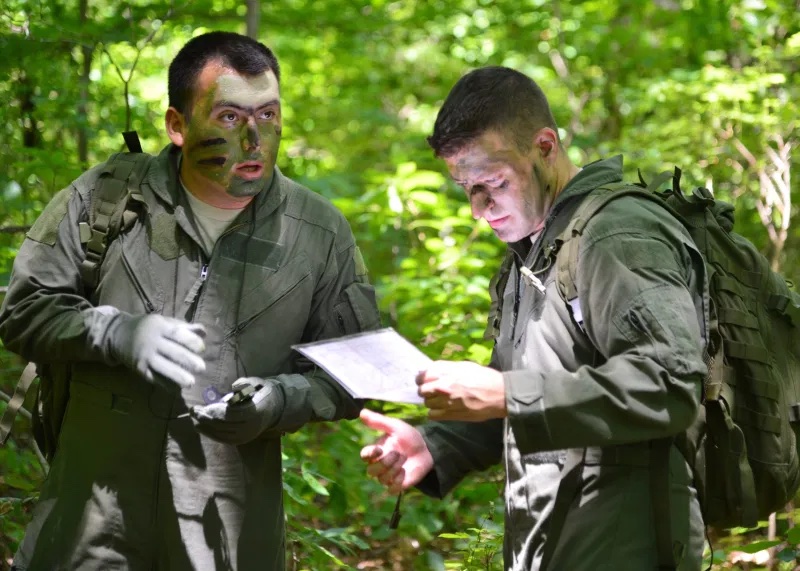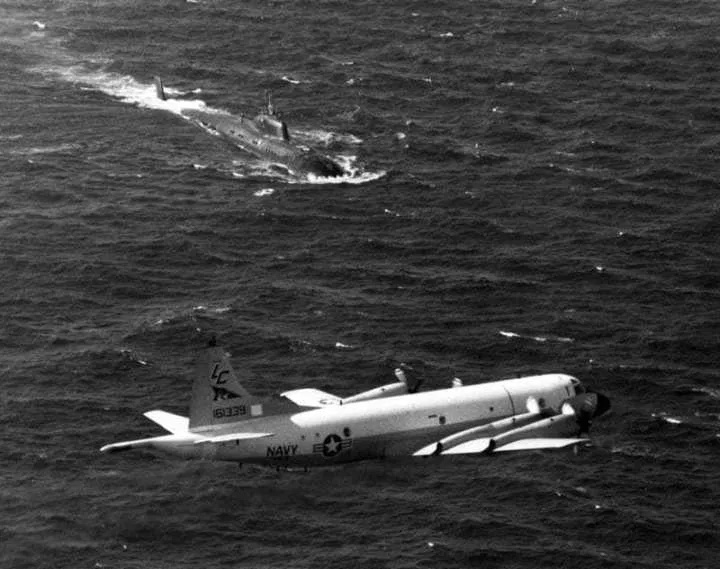*This is Part II of a multi-part series on Navy’s SERE school
By Sean Spoons via SOFREP
0530 hrs.
It was still pitch black in Norfolk when my alarm clock went off waking my three other roommates, who profanely cursed me and rolled over for another half hour of sleep until their own alarms would go off at 0600. I put on thermal underwear, then my flight suit, and zippered my steel-toed flight boots over a pair of warm wool socks. Those steel caps in the toes were the bane of naval aircrewmen: In the summer, direct sunlight on the top of boot would feel like your toes were being lit on fire, and in the winter they’d get so cold the tops of your boots would gather frost.
Norfolk was an ugly town in winter, at least to a guy from Florida. Every tree and blade of grass went to a dead, drab, tan color in winter and stayed that way until spring. The wind coming off the Chesapeake was cold and gusty as I made my way the half-mile on foot to the naval air station side where I could down a couple of cups of coffee while waiting for the P-3 Orion to crank up its four Allison engines and take off for Brunswick, and eventually SERE School.
When I arrived at the passenger lounge at Chamber’s Field I presented my travel orders. I noticed two other guys from my squadron there wearing their dress blues. They were surprised to see me in flight gear, “You were supposed to travel in your dress uniform Spoonts,” one of them said to me. “You’re going to get in trouble.” I pulled out my travel orders and sure enough, it said that dress blues was the required uniform for travel. I had just skimmed it like an idiot. A small wave of panic ran over me. Would I have time to duck into the head (Navy-lingo for “bathroom”) and change quickly? I then remembered that there was no “quickly” when it came to getting into your dress uniform. It was custom-made for you at boot camp to be tight-fitting: the pants had a front flap with 13 individual buttons and just getting the tunic over your head could be like wrestling a greased python.
I was pretty sure I was screwed and imagined being written up or worse, not being allowed on the plane. In those days, SERE was a “No-Fail” school. If for some reason you don’t make it through they revoke your security clearance. If that happened, I’d be done as an anti-submarine warfare operator and off to a carrier flight deck as a green-shirt handler. A fate worse than death.
Standing near the door were a couple of the P-3 aircrew to check in, I supposed, the six-eight passengers that would be aboard that flight. I walked over to a 2nd Class Petty Officer with a Tom Selleck mustache who was flight gear. I asked him in how much trouble I might be. He pretended for a moment that I was in a ton of trouble and then smiled and said it would be no problem. We got to chatting about some of the gear on the P-3. I was very interested to hear about the infrared camera system they had on board and said I would like to see it.
He looked at me for a couple of seconds, asked for my travel orders, and said he would be right back. When he returned he handed me a sheet of paper that was a copy of the flight manifest. He said that he had spoken to the aircraft commander and that I was being reclassified from “passenger” to an “Aerial Observer” on the flight. I asked him what that meant, he replied, “Hell, it means you’re on the flight crew, you can sit at the IR station and I’ll show you how it works.”
In the next moment, I was exiting to go out to the aircraft to the utter astonishment of my two squadron mates who might have thought I was being arrested for being in the wrong uniform. Being carried on the manifest as “crew” rather than “passenger” also meant that when I got back I could add the flight hours to my logbook. I learned a big lesson there about how to “game” the Navy system.
Flying “Space Available” was a cheap way to travel in the navy. If a plane was going somewhere and it had an empty seat, you could show up and get on the flight. If you had family near a naval air station you could fly home on a weekend for free. It wasn’t unusual to see guys get on board with golf bags to go play the links somewhere. But there was a pecking order to it all. If you were traveling under orders you had priority over someone traveling for leisure; if you had orders and another passenger with travel orders outranked you, you got bumped.
Aircraft like the P-3 Orion had a certain number of crew seats (11, I think) and another eight to ten seats that could be taken by passengers. But on flights like this, there were always empty crew seats because they were not flying ASW missions and didn’t need a full crew. Yet, those seats could only be filled by crewmembers, not passengers. So, if I could get on the flight manifest as a crewmember I was “bump-proof” because I’d be in a crew seat rather than one of the open passenger seats that a lowly E-3 like me would get bumped from instantly. In this case, I had a Priority Chit for the flight which made me bump-proof (supposedly) but if some admiral wanted to visit his sister in Maine that day, I’m quite sure that chit wouldn’t be worth the paper it was printed on.
The Orion was already running and warming up when I ascended the steep ladder to enter the fuselage; it was my first time aboard one. To my left looking forward was a long narrow hallway of computer panels and seating stations. To my right looking into the rear of the plane was a galley kitchen, a four-person booth with a table like you’d see in a restaurant, and two folding bunk beds. It also had a bathroom. I remember the smell of coffee being brewed in the galley mixed with the odor of engine exhaust and hydraulic fluid.
The PO2 with the mustache seated me at the FLIR panel and told me to sit tight till we took off. I pulled myself into the four-point restraint system and tightened the straps. The panel in front of me had a 20-inch convex CRT screen and a joystick like that of a fighter plane with buttons on it used to control the motion of the Forward-Looking Infrared camera that could zoom and pan and even lock and track on to a moving object. It could also provide data on the object’s location. This meant you could target a missile or bomb with an IR seeker on it.
The P-3 Orion was not much of a looker. You could easily mistake it for another cargo or prop-driven passenger plane, except for one distinct feature: a long boom extending from the tail like a stinger on a bee. That stinger was a Magnetic Anomaly Detection or MAD system. Flying under 1,000 feet that boom could detect the anomaly in the waves of the Earth’s magnetic field caused by a large metallic mass nearby. And that large metallic mass would be the submerged submarine. Other than a U.S. attack submarine, the Orion was probably the most deadly anti-submarine warfare platform on the planet. It could also drop bombs and fire anti-radiation missiles like the Maverick and anti-ship missiles like the Harpoon. And it was fast enough to get clear of a B-57 nuclear depth bomb. The Orion’s cargo plane-like appearance masked its true nature as a deadly weapon of war, one capable of delivering a three-megaton nuclear punch if it had to.
Soon the passengers were all aboard. A safety brief, about where the rafts and parachutes were located, was given and the four Allison turboprops lifted us effortlessly into a gray, leaden sky with low clouds and haze. My newfound mentor spent some time showing me how to operate the FLIR panel and I spent the next couple of hours glued to the black and white screen scanning the ground with it, zooming in on trucks on the highway four miles below us and then track-locking them to the camera. It was pretty fun to play around with. I also put on a set of headphones and plugged them into the interior comms system to listen to the pilot’s cross-talk and radio chatter with ATC towers as we passed through their different control zones. I did that to distract myself from what was to come when I would arrive in Brunswick.
I had adrenalin-fueled butterflies in my stomach the whole way.
This post originally ran on www.sofrep.com


